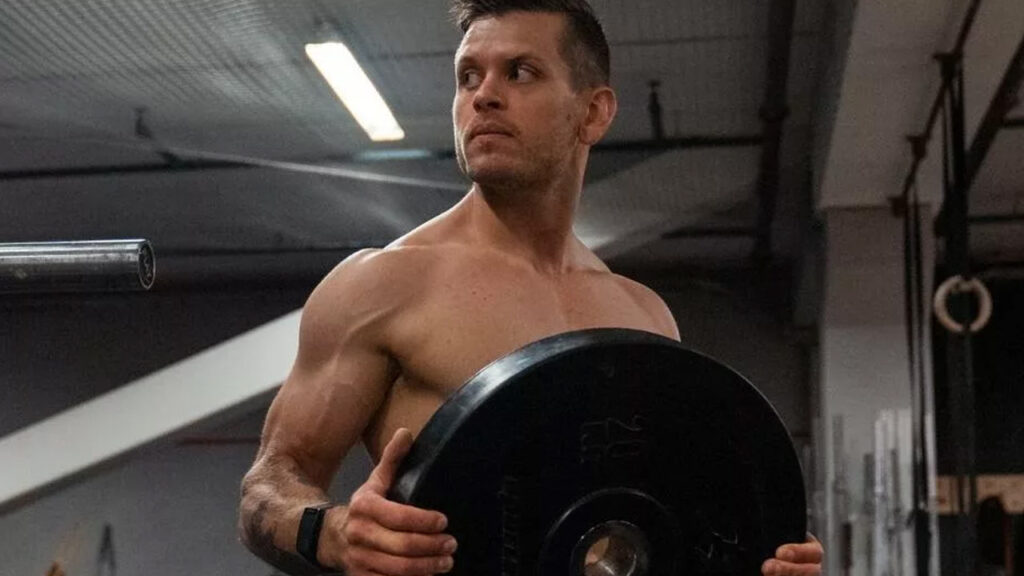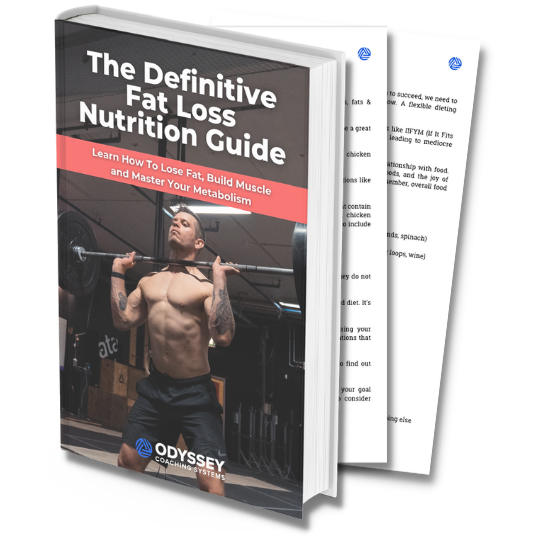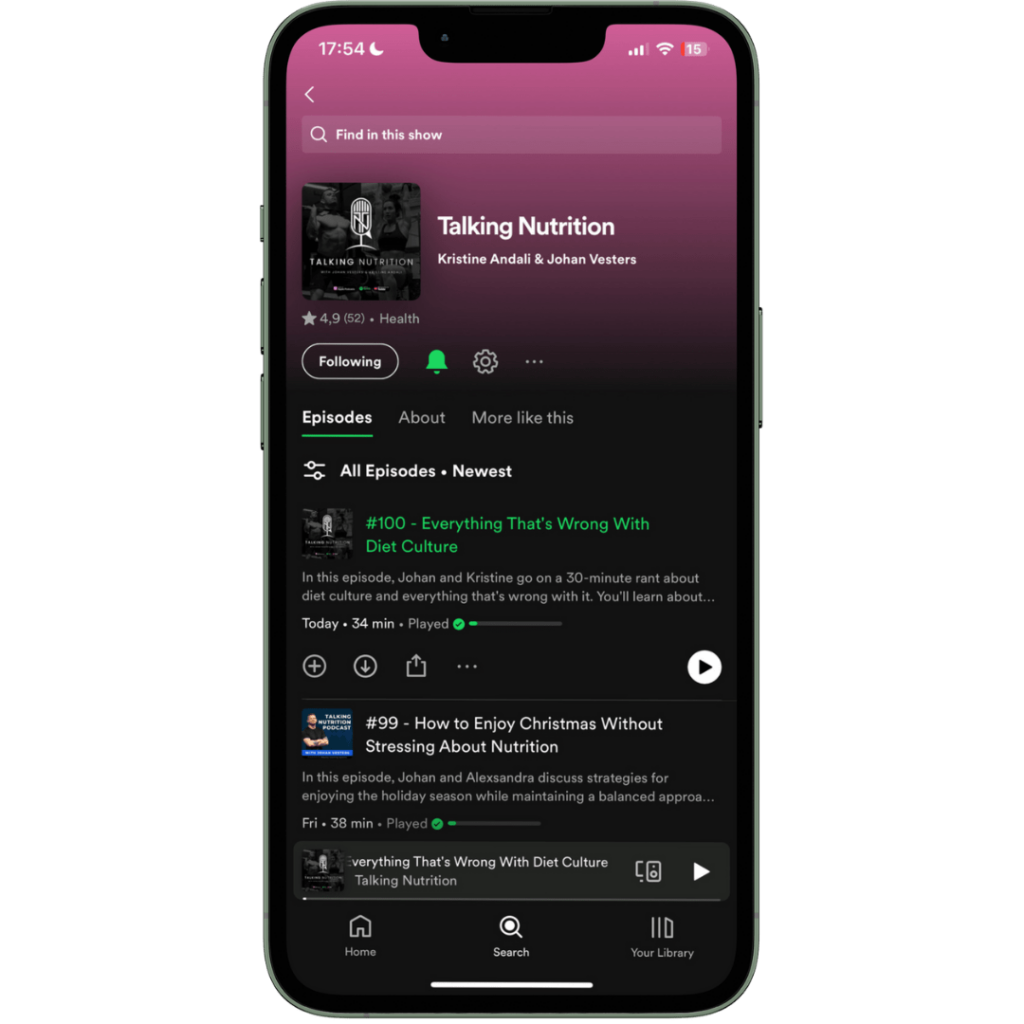Alright, I WILL teach you exactly how to lose fat and gain muscle in this article. But you need to know that 30 days is not going cut it (pun intended).
If you’re looking for the quick ‘summer shred’ or ‘sixpack in six weeks!’ BS, then I can’t help you.
Because if you want to lose fat and gain muscle the sustainable way, a quick restrictive 30-day diet or meal plan simply won’t do. It’s going to require periodization & long term planning, two things most people miss out on, leading to mediocre-at-best results, weight regain & having to keep dieting just to keep some of the weight off.
If it’s real results you’re after, then this article is for you.
I’ll show you exactly how to structure your nutrition the same way I do with my online nutrition coaching clients. You’re going to lose body fat, gain lean muscle & get healthier the sustainable way.
Can you lose fat AND gain muscle at the same time? - Body Recomposition
Is body recomposition, where you lose fat and gain muscle at same time, really possible?
Yes, and we’ll get into how a sec, but first we need to address a few terms that are being thrown around on social media all too often. Terms that, depending on your experience level, might be setting you up with unrealistic expectations.
You’ll hear about things like ‘toned muscles’, ‘build lean muscle’, or even worse: ‘turn fat into muscle’. The reality is that you can’t ‘tone’ a muscle. Saying ‘lean muscle’ is like saying ‘wet water’, muscle is ALWAYS lean.
You also can’t turn fat into muscle, or the other way around, they’re two completely different types of tissue. You can however lose fat & gain muscle, which both play an equally important role in looking more lean, toned, shredded, etc.
For the most part, you’ll target muscle growth & fat loss in different phases. Not because you can’t do both at once, but because you’ll likely see more progress when you target one at a time. As with everything else health & fitness, it’s really going to depend on where you’re at in your journey, the habits (both lifestyle & nutrition) you already have in place, & your experience level in the gym.
Because there are some scenarios where you might see some next level body recomposition:
- ‘Newbie gains’. When you’re new to lifting weights, you may actually see a good amount of muscle growth & fat loss at the same time. Although this still doesn’t happen at a 1:1 ratio, it’s enough to make an experienced lifter jealous.
- You start dialing in your nutrition & increase your protein intake for the first time (in a while). One of the very first things I do with my clients is having them eat enough. The effects of increasing protein in particular, still amazes me. What often happens is they stay about the same weight (which is the goal during this first phase), but start to lose centimeters around the waist.
- There is something to be said about effective, consistent training & recovery. The body needs a good reason to build bigger muscles. Many people A) don’t train hard enough to challenge the muscle, B) send the wrong signal (e.g. cardio for body composition), C) don’t rest/sleep/eat enough to recover, or D) a combination. Once you start to fix that, you may see quite a bit of progress in a short time!
- Let’s talk about the elephant in the room. PEDs, performance-enhancing drugs, Anabolic Steroids. You’d be surprised how many of the people you may follow on social media are ‘juicing’. That includes fitness influencers, actors, models, athletes, & more… Be aware of the chance that you might be following quite a few of them. This could, once again, lead to unrealistic expectations. Always be critical.
Individualization
Real, sustainable, long term results require an individualized approach, based on your needs & preferences. A plan also needs to be periodized in a way that fits into your life, schedule, goals & plans.
I can give you all the information in the world in these articles, which I will, but you’re still going to need help putting all of this into practice. Doing so is a hell of a lot easier with the accountability & guidance that comes with coaching.
Ready to take this to the next level & want to learn more about how we can personalized your nutrition and training to YOUR daily life? Then go ahead and fill out your coaching application. Let’s chat and see if you’re a good fit for our program and vice versa. The call is on the house!
Periodization
Here’s how building muscle works. You expose your muscles to stress by (resistance) training, which is the ‘signal’ that tells your body “Hey! We need bigger muscles so we can deal better with this stressor next time it comes around”.
Now, you actually don’t get stronger as you work out, you also don’t grow bigger muscles at the gym. The workout is just the signal, you then need to facilitate recovery by eating enough, sleeping enough, & spending enough time in a parasympathetic (or ‘rest/digest’) state.
Starting off with a muscle building phase, when done right, leads to better results for two reasons:
- What we’re aiming for here is more definition, which means you’re going to want to build muscle so that there’s more to show once you’re done with the fat loss phase. There’s more to a ‘shredded’ or ‘toned’ look than just aiming to hit a lower number on the scale.
Just aiming to be lighter, leads to exactly that: you’ll just look lighter.
- To provide your body with the raw materials it needs to build a solid amount of muscle, you want to be at least within your maintenance calorie range, but preferably even in a slight surplus.
Because we’re feeding you up, you also optimize your metabolism for the upcoming fat loss phase. Just how your metabolism slows down when dieting, it can also speed up when you slowly increase your food intake.
When there’s an abundance of food, your metabolism doesn’t have to worry about saving calories. Instead it’ll start to burn more calories, which is exactly what you want when you start the next phase.
Non-negotiables during your muscle building phase:
- Lift weights 4-5 times a week.
- Eat at least at maintenance.
- Eat about 2.2g of protein per kilo of body weight.
- When you do eat in a surplus, use the minimum effective dose. Fast weight gain will only lead to more fat gain. To make sure you mostly put on muscle, take it slow. Aim for 0.25 – 0.5% of weight gain per week.
- Take at least 2 rest days per week.
- Sleep 7+ hours a night.
Building muscle is about more than looks. It keeps you healthy as you age & even helps you keep the weight off. Just by having more muscle, you’ll be burning more calories. You might’ve heard “your metabolism slows down as you age” before.
Now, this actually does not have to do with age (1), but simply with the fact that most people move less & less as they get older. This is good news for you, because now you know exactly how to stay healthy in the long run. It’s also bad news for those who blame their age for their slow metabolism.
Phase II: Fat loss
Time to reveal what you’ve built. This is where you’re going to have to double down on adherence, & sticking to your calories.
During phase 1 you were at maintenance, which allows for lots of flexibility, which I recommend you to take advantage of by the way. Phase 2 however does come with restriction. You’re going to create a calorie deficit (meaning there are fewer calories coming in than the amount you expend) by lowering your food intake. Your body perceives that there’s a lack of food around & will burn some of its energy stores (body fat) to make up for the deficit.
Keep working out, but don’t just do it to burn as many calories as possible. Instead: train to maintain. As you lose weight, the goal is to lose fat while you hold onto that muscle you just worked so hard for.
The amount of exercise you need to do to maintain muscle mass is actually quite low (2), but you do want to keep working out. You want to still send your body a signal of “Hey, we still need these muscles”. Eating plenty of protein also ensures why protein to maintain muscle, not burn it for fuel
A deficit isn’t forever, but when you go into this phase, make it count. There are many ways to include your favorite foods, or even alcohol, but address your priorities & make sure that your actions align with your goals. Prioritize filling foods here (load up on veggies), keep protein (the most satiating macronutrient) high, & keep your daily step count up (non-exercise activity accounts for 15% of your total daily energy expenditure).
Something you might not know about energy balance is that it doesn’t come down to the individual days, but instead, weeks.
The following does require a bit more planning, but if you want you can totally spend 1-2 days at maintenance per week, while still being in a deficit.
Here’s how: first multiply your daily (calorie deficit) target by 7, you now have your weekly caloric budget. Then subtract the 1-2 days worth of maintenance calories & divide what’s left by 5-6 days. You now know exactly how much you want during the weekdays, to allow for the higher days at the weekend.
Make sure to sleep enough, as sleep deprivation can hinder your fat loss results. A 2010 study (3) compared two groups, both in an equal caloric deficit. One group spent 8.5 hours in bed per night, the other 5.5 hours.
Even though both groups lost equal amounts of total weight, the sleep restricted group lost more lean mass, & less fat mass.
The sleep restricted group also experienced increased hunger & showed a more significant decrease in resting metabolic rate. Sleep influences both sides of the ‘calories in vs calories out’ equation, so make sure to get plenty of it!
Non-negotiables during your fat loss phase:
- Track your steps & aim for at least 8-10k per day.
- Train to maintain muscle, not to burn calories.
- Create a weekly calorie deficit.
- Keep protein at least at 2.2g/kg of body weight, higher may be beneficial for satiety & muscle maintenance reasons.
- Also in a deficit, use the minimum effective dose. Fast weight loss increases the risk of rebound & loss of muscle mass. To make sure you mostly lose fat, aim for 0.5-1% of weight loss per week.
- Take at least 2-3 rest days per week.
- Sleep 7+ hours a night.
Phase III: Reverse
Once you get to your goal weight, you’re not done yet. The real work has only just begun. Fat loss is only half the battle, now it’s all about keeping it off, which is the tricky part.
After phase II, your metabolism has slowed down & your body’s fat storing abilities have improved. If you were to overshoot your calories all of the sudden, your body can even increase in its number of fat cells. To add to the problem, your hunger hormones are now elevated to a point where your hunger exceeds the amount of energy the body actually needs. Long story short: a recipe for weight regain.
The moment after the actual diet, is where the vast majority of people go wrong.
But it’s not their fault. It’s the fact that those 30-day shreds, meal plans, etc. don’t provide them with an exit strategy, there’s no plan for what happens after the diet.
They’re only being helped with the easy part, weight loss. But when it’s time for the hard part, weight maintenance, they’re left on their own.
Here’s something they didn’t tell you: You’re not supposed to stay on those low calories to keep the weight off.
Just how we fed you up during that muscle building phase, we’re now going to take a similar approach to restore your metabolism.
Though we don’t want to keep you in a calorie deficit for too long. That’s why we’ll start your reverse diet about halfway between the amount of calories you’re on at the end of the diet & your new estimated maintenance calories. After that, it’s all about taking it slow.
What happens to your body weight throughout the reverse diet really depends. You might stay about the same weight, gain some, or keep losing for a while. Whatever it’s going to be for you, know that it’s 100% normal to gain a few kilos on your way back to maintenance. Now, that doesn’t mean that you’re going to regain a few kilos of body fat.
Most of this weight will come from the increase of food, the replenishment of your glycogen stores (stored carbohydrate in your liver & muscles, these deplete when dieting) & fluids. Just take it slow & keep track of additional metrics like body measurements & photos to maximize your chances of getting the best results possible.
In my experience, this can be the most difficult phase of all. It can literally make or break your long term results. Stick to the same non-negotiables we talked about, but feel free to increase exercise to 5 times a week if you wish. Trust the process & stick to the plan (this is not the time to stop tracking).
Phase IV: Maintenance
Once you’re back at your new maintenance calories, you’ve made it! Given that you took your time to build muscle, go through the dedicated fat loss phase & slowly back reverse up, you should now be in the perfect place to maintain your results.
Although it can take some getting used to, because the goal is to ‘stay the same’, don’t underestimate the importance of eating enough. You need to get to maintenance & actually stay there for a while to get your body back to homeostasis, a state of balance..
Your long term success rate of maintaining your results, as well as future fat loss phases is directly related to the amount of time you spend actually eating enough.
In the grand scheme of things, maintenance is really where you want to spend most of your time.
During this last phase, I typically have my clients move away from things like tracking, especially if they’re about to go on a trip. What serves as the best tool to achieve results & to learn from nutrition, doesn’t have to be a lifestyle thing.
It’s equally important to be able to do without tracking, which is why you can totally move away from it once you’re back at maintenance. The way I like to do it is going from 7 tracked days a week, to maybe 5. We then first see how it goes before we bring it down to 3, 1, & eventually no tracked days.
’Keeping it off’ is relatively easy if you maintain the healthy habits you’ve established along the way, to recap:
- Resistance train 3-5 times a week.
- Stay active throughout the day (about 8-10k steps).
- Eat mostly whole foods (include 1-3 servings of fruit & 2-4 servings of veg per day).
- Include protein with every meal.
- Drink lots of water.
- Sleep enough.
- Eat slowly (chew your food, don’t power-shovel) until you feel full, not stuffed, when you’re not tracking to manage energy balance. Eating slowly also supports digestion.
How to lose fat and gain muscle in 30 days
y now, you understand how doing a 30-day shred without an exit strategy really sets you up for failure. You understand why so many people regain weight as soon as they ‘go back to normal’. You also understand that this is going to take much longer than you initially thought.
How much time you spend in each phase once again, depends. But I’d recommend at least planning for 1-2 months per phase, at the very least. So make sure to plan ahead. Going on a trip? The last thing you want is to still be in a deficit by the time you leave. Any holidays coming up? Plan for maintenance, or even a slight surplus.
“Where do I begin?”
I’m glad you asked, because I know it can feel like information overload sometimes. If you want me to help you out, book a free strategy call. Let’s get you set up with some action steps to follow, so that you too can start to work towards your long term fitness goals.
- Pontzer, Herman et al. “Daily energy expenditure through the human life course.” Science (New York, N.Y.) vol. 373,6556 (2021): 808-812. doi:10.1126/science.abe5017
- Bickel, C Scott et al. “Exercise dosing to retain resistance training adaptations in young and older adults.” Medicine and science in sports and exercise vol. 43,7 (2011): 1177-87. doi:10.1249/MSS.0b013e318207c15d
- Nedeltcheva, Arlet V et al. “Insufficient sleep undermines dietary efforts to reduce adiposity.” Annals of internal medicine vol. 153,7 (2010): 435-41. doi:10.7326/0003-4819-153-7-201010050-00006





